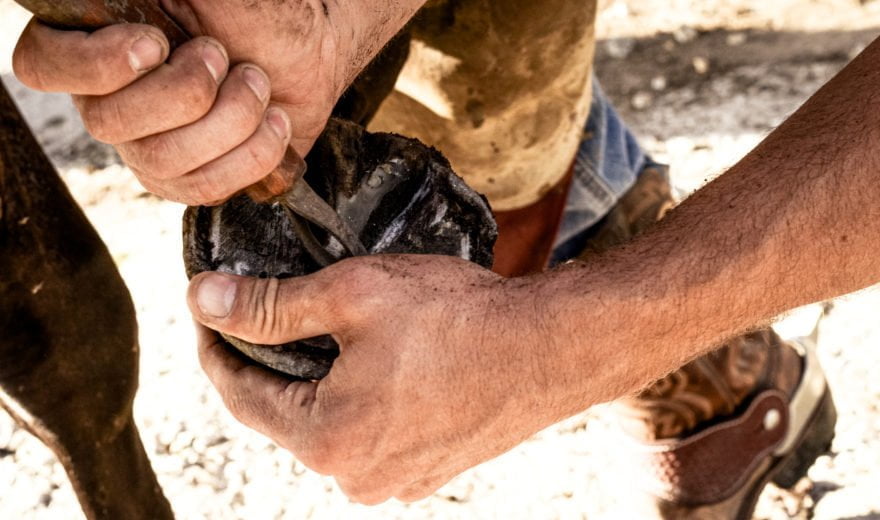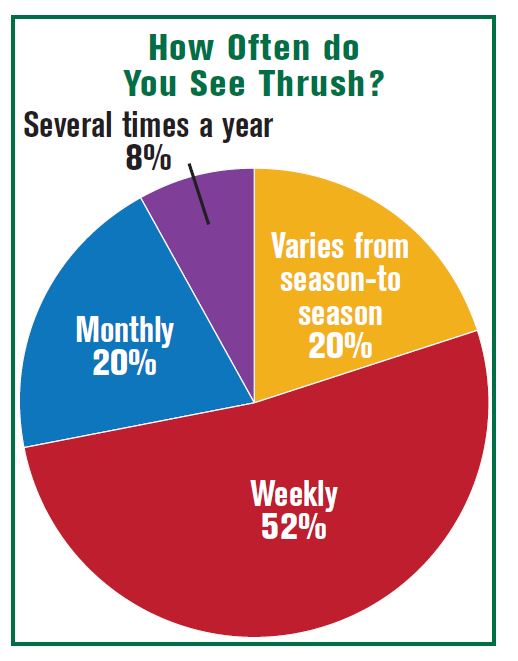
Lucy's owner cleans her hooves, the farrier visits every 8 weeks and she receives plenty of exercise. Yet she is still plagued with the unpleasant condition known as thrush. Thrush is an infection of the horse's central and collateral sulci of the horse's frog. The frog is the V-shaped structure located between the sole, wall and bars in the heel area of the horse's hoof.

Contrary to what most believe, thrush is not a result of standing in wet, dirty bedding. Poor foot conformation, lack of exercise, improper trimming, chronic lameness, poor diet, or poor circulation can all lead to the disruption of the natural cleaning system experts now believe occurs within the hoof. The weight of the horse pushing down on the frog and surrounding area results in a 'clean out' of the hoof’s system. When frog tissues become weak, they become susceptible to penetration by the bacteria. Consequently, can develop the disease.

Source: American Farriers Journal’s 2019 Farrier Business Practices Report

 BACK TO MAIN BLOG
BACK TO MAIN BLOG 
Comment